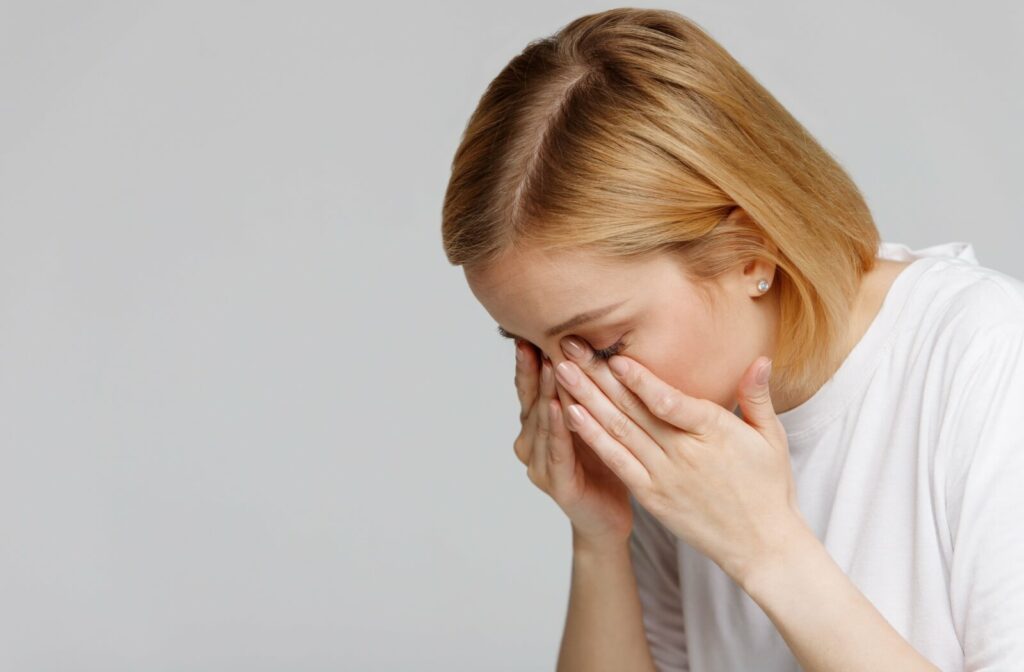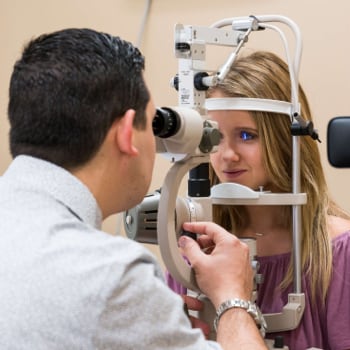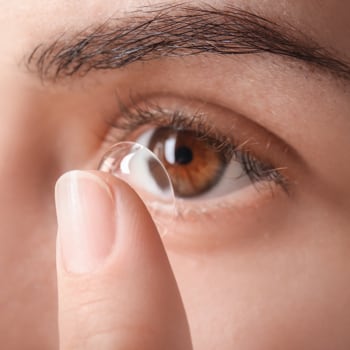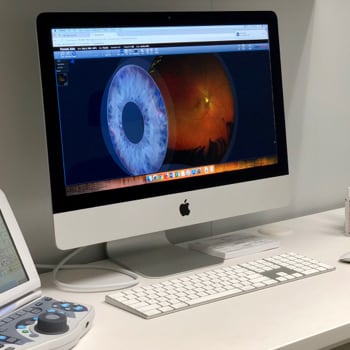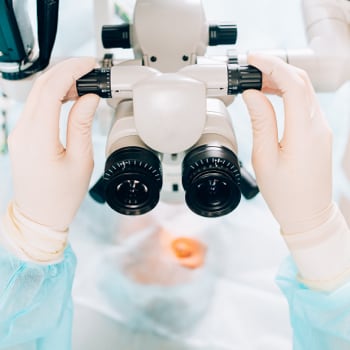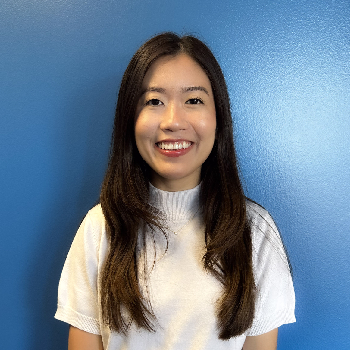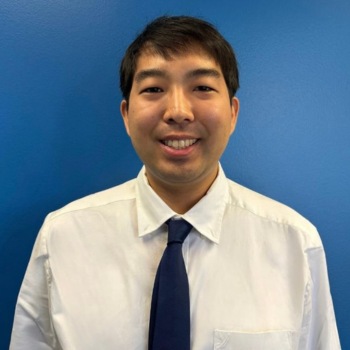If your eyes feel irritated, uncomfortable, or dry, it’s not always you; sometimes, the problem might be your contact lenses.
Listen, contact lenses can be a fantastic way to correct your vision. With the right lens and a proper fit, lenses should feel so comfortable that you may not even notice you’re wearing them.
You can absolutely wear contact lenses with dry eye. The key is finding a lens that’s dry eye-friendly and practicing proper contact lens handling.
Everyone’s eyes are different, and what works for your friend might not work for you. Our dedicated team is here to help you find the right solution, and a contact lens exam is all it takes to get started.
Dry Eye & Contact Lenses
Dry eye happens when your eyes don’t produce enough tears or when tears evaporate too quickly from the eye’s surface. It’s a chronic eye condition that causes your eyes to feel scratchy, irritated, and uncomfortable. When you add contact lenses to the mix, things can get tricky.
Contact lenses sit directly on the eye’s surface, constantly interacting with your tear film–that thin layer of moisture covering your eye. When you don’t have enough tears, your contacts can feel like sandpaper. They might stick to your eye, move around too much, or become cloudy throughout the day.
Here’s what’s happening: your contact lens needs to stay moist to remain comfortable and provide clear vision. Without adequate tears, the lens dries out, creating friction against your eyelid every time you blink.
Why the Wrong Contact Can Make Dry Eye Worse
Not all contact lenses are equal in their design, especially when it comes to dry eye. The wrong type of lens can turn a manageable dry eye situation into a daily struggle.
There’s a silver lining in this, though: with so many different lens types, contacts can accommodate a range of visual needs and lifestyle preferences. The key is finding the right lens type that works for you.
The Material Matters
People are most familiar with traditional soft contact lenses. These lenses are made from hydrogel materials that absorb water from your tears, keeping them moist.
If you already have dry eye, these lenses are basically competing with your eyes for the limited moisture they have. The result? Your eyes become even drier, and your contacts become uncomfortable, leaving you with that gritty, uncomfortable feeling.
Improper Lens Care Compounds the Problem
How you handle your contacts plays a huge role in comfort. If you’re not cleaning them properly, protein deposits and bacteria can build on the lens, creating a rough texture that irritates your already sensitive eyes.
Sleeping in contacts that aren’t made for overnight wear is another common mistake. This prevents oxygen from reaching your cornea, which can significantly worsen dry eye symptoms.
Using the wrong contact solution can also be problematic. Some multipurpose solutions contain preservatives that can irritate sensitive eyes or strip away the natural oils that help maintain your tear film.
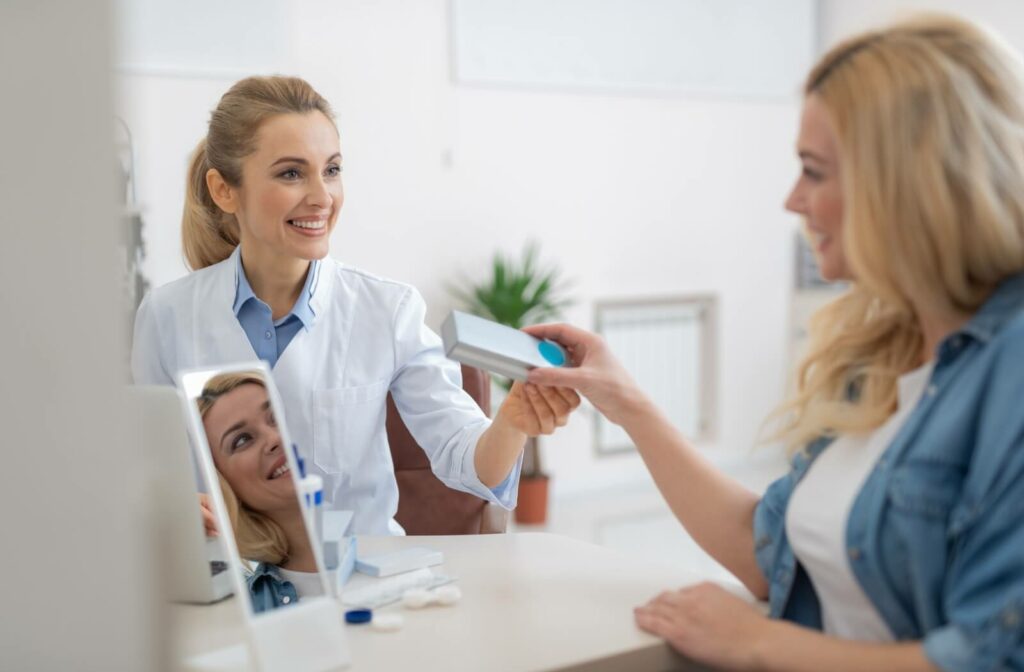
The Best Contact Lens Types for Dry Eye
Now for the good news—there are several types of contact lenses specifically designed for people with dry eye.
Silicone Hydrogel Lenses
These are generally an excellent choice for dry eye. Silicone hydrogel lenses allow much more oxygen to pass through to your cornea than traditional hydrogel lenses. They tend to retain moisture better and don’t dehydrate as quickly throughout the day.
More oxygen means healthier, more comfortable eyes!
Daily Disposable Lenses
Daily disposables are ideal for dry eye because they provide a fresh, clean lens every day. There’s no time for protein deposits or bacteria to build up, which means less irritation.
You also don’t need to worry about cleaning solutions that might irritate your eyes. Just pop in a fresh pair each morning and toss them at the end of the day.
Tips for Comfortable Contact Wear with Dry Eye
Once you’ve got the right lenses, here are some strategies to keep your eyes comfortable:
- Use the right eye drops: Look for preservative-free artificial tears that are specifically labeled as contact-friendly. You can use these drops while wearing your lenses for added hydration.
- Follow proper care: If you’re wearing reusable lenses, clean them as directed. Use fresh solution every time—never reuse or top off old solution. Clean the storage case daily to prevent any buildup.
- Take breaks: Give your eyes a rest by wearing glasses occasionally. Even if you love your contacts, your eyes will appreciate the break, especially on days when they’re feeling extra dry.
- Stay hydrated: Drink plenty of water throughout the day to keep your body well-hydrated. Dehydration can worsen dry eye symptoms, making contacts less comfortable.
- Consider your environment: Dry, windy conditions or air conditioning can make dry eye worse. Use a humidifier at home or work if possible.
If irritation and dryness continue despite these changes, it might be time to take a more direct approach with in-clinic dry eye therapies.
Don’t Let Dry Eye Keep You from Contacts
Having dry eye doesn’t mean you have to give up on contact lenses. With the right lens type, proper care, and professional guidance, you can enjoy clear, comfortable vision all day long.
The key is working with your optometrist, especially one who understands the nuance behind dry eye and contact lenses. Modern contact lens technology has come a long way, and there are more options than ever for people with dry eye.
If you’re struggling with dry eye and contact lens comfort, don’t suffer in silence. Explore your options with Great Hills Eye Care. Book your appointment with our team today and take the first step toward comfortable, clear vision.

